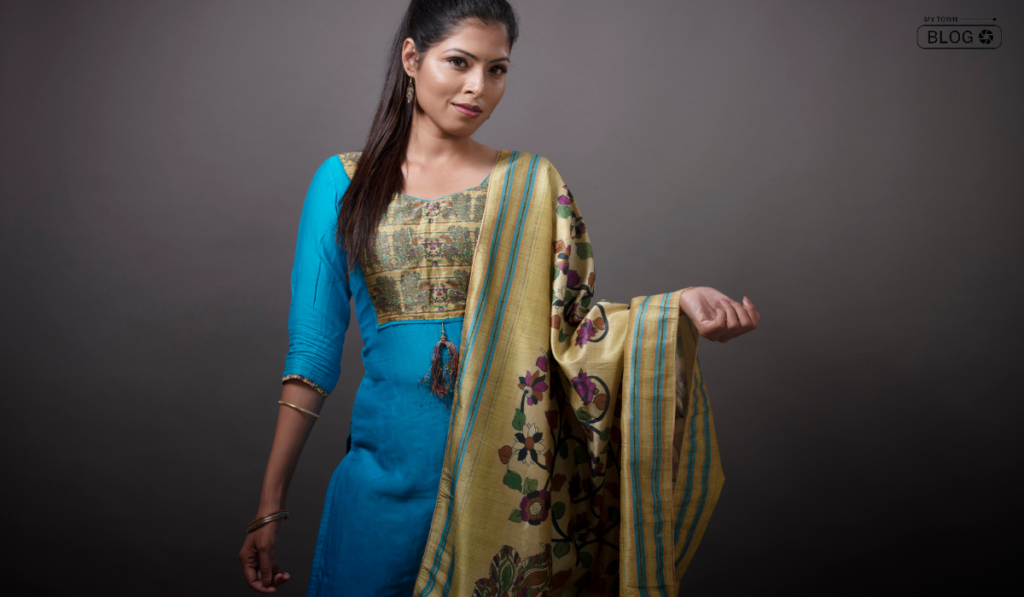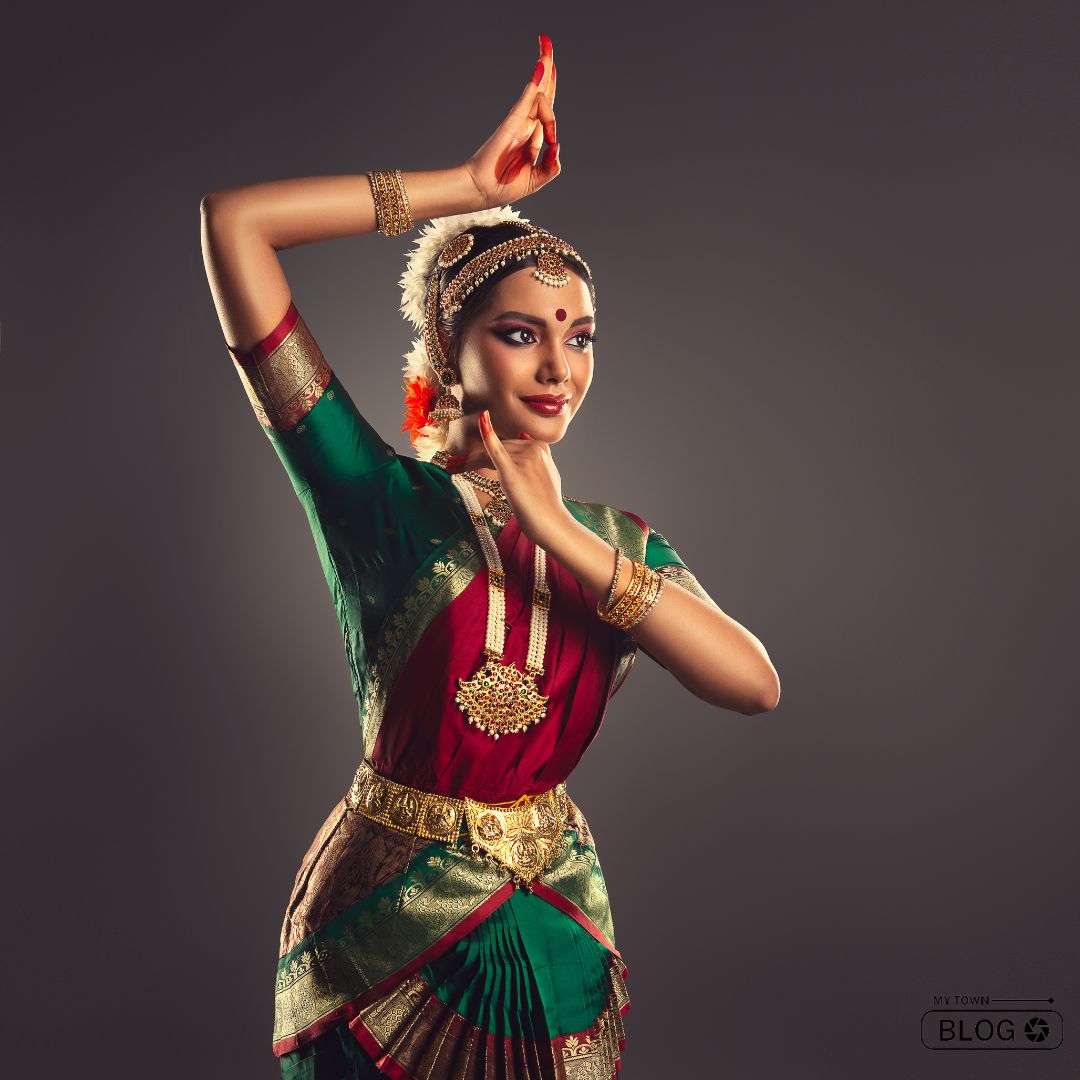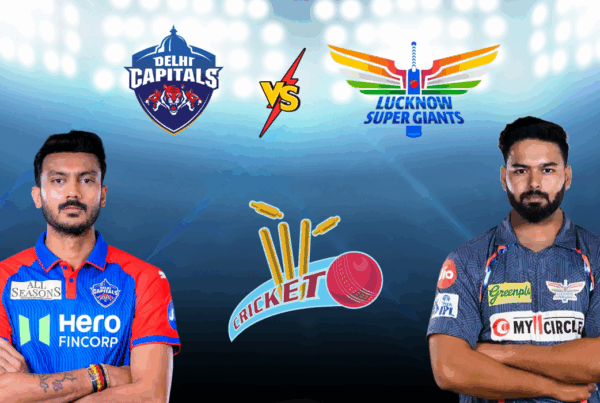Embark on a cultural odyssey through India’s diverse states, each boasting a unique tapestry of Indian State Traditional Attires, deeply rooted in history, traditions, and climate.
Assam – Mekhela Chador
Immerse yourself in Assam’s cultural elegance with the Mekhela Chador, a vibrant two-piece garment adorned with intricate Assamese motifs. It beautifully embodies the grace and simplicity of Assamese heritage.
Rajasthan – Ghagra Choli
Step into the royal essence of Rajasthan with the Ghagra Choli, a flared skirt paired with a blouse and dupatta. Reflecting the state’s regal spirit, it is embellished with mirror work and embroidery.
Punjab – Salwar Kameez

Experience the comfort and elegance of Punjab through the Salwar Kameez, showcasing vibrant Punjabi suits with phulkari embroidery. These outfits capture the lively spirit and rich traditions of the state.
Kerala – Mundu and Sari
Witness the simplicity and grace of Kerala’s traditional attire – the Mundu for men and the Kasavu Sari for women. White garments with golden borders reflect the cultural heritage of this coastal state.
Gujarat – Chaniya Choli
Dance to the vibrant rhythms of Gujarat’s traditions with the Chaniya Choli – a colorful three-piece ensemble featuring a flared skirt, blouse, and dupatta. It’s a staple during the lively Garba dance performances of Navratri.
Maharashtra – Nauvari Sari
Admire the strength and resilience of Maharashtrian women through the Nauvari Sari, a unique nine-yard drape. Often worn during festivals, it symbolizes cultural pride in Maharashtra.
West Bengal – Sari and Panjabi
Experience the artistic craftsmanship of Bengal with the six to nine-yard saris for women and Panjabi for men. Tant and Baluchari saris, famous for their traditional motifs, showcase the cultural richness of West Bengal.
Tamil Nadu – Pavadai Thavani
Celebrate the vibrant culture of Tamil Nadu with Pavadai Thavani, a traditional attire for girls featuring a long skirt, blouse, and a half sari. It’s famous for festive occasions, mirroring the state’s lively spirit.
Karnataka – Mysore Silk Sari
Drape yourself in the pride of Karnataka with the Mysore Silk Sari, woven with pure silk and intricate zari work. These saris symbolize elegance and sophistication because of their soft texture and rich colors.
Uttar Pradesh – Saree

Indulge in the fine threadwork of Uttar Pradesh’s cultural heritage with the Saree. Adorned with delicate embroidery, these suits exemplify grace and refinement, reflecting the state’s timeless elegance.
Conclusion:
India rich tapestry of traditional attire, woven with cultural threads from diverse states, showcases the country’s vibrant heritage. Explore the kaleidoscope of colors, fabrics, and designs in each outfit, from Assam’s Mekhela Chador to Uttar Pradesh’s Lucknowi Chikan Suit. Witness the cultural pride embedded in every stitch and pattern, as these Indian State Traditional Attires connect the present with the rich tapestry of the past.
FAQs:
Are these traditional outfits only worn during festivals?
While many traditional outfits are commonly worn during festivals and cultural events, they are also part of daily wear in their respective regions. The frequency of wearing depends on the occasion and personal preferences.
Can anyone wear these traditional outfits, or are they reserved for specific communities?
Traditional outfits are generally inclusive, and people from any community or background can wear them. However, some companies may have cultural or religious significance, so it’s essential to be respectful and mindful of the context.
Where can one purchase authentic traditional outfits from different states?
Local markets, specialized boutiques, and online platforms that specialize in formal Indian wear offer authentic traditional outfits. Researching and buying from reputable sellers is advisable to ensure authenticity and quality.
Do these outfits have specific meanings or symbols?
Yes, many traditional outfits carry cultural, historical, or religious significance. The motifs, colors, and designs often represent elements of the region’s heritage, mythology, or traditions, adding depth and symbolism to the attire.
Are there variations in traditional outfits within the same state?
Yes, there can be variations in traditional outfits, even within the same state. Different communities, subcultures, or historical influences may contribute to unique styles and variations in conventional attire.
Can traditional outfits be customized or modernized?
There is a growing trend of modernizing traditional outfits while preserving their essence. Designers often incorporate contemporary elements, making these outfits adaptable to various occasions and preferences.








